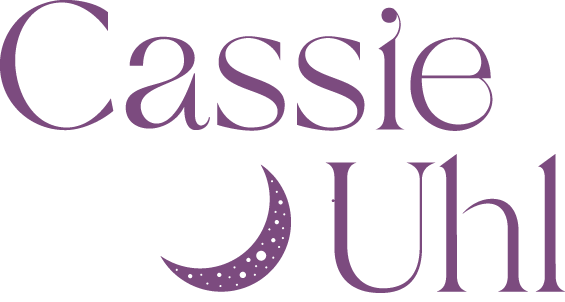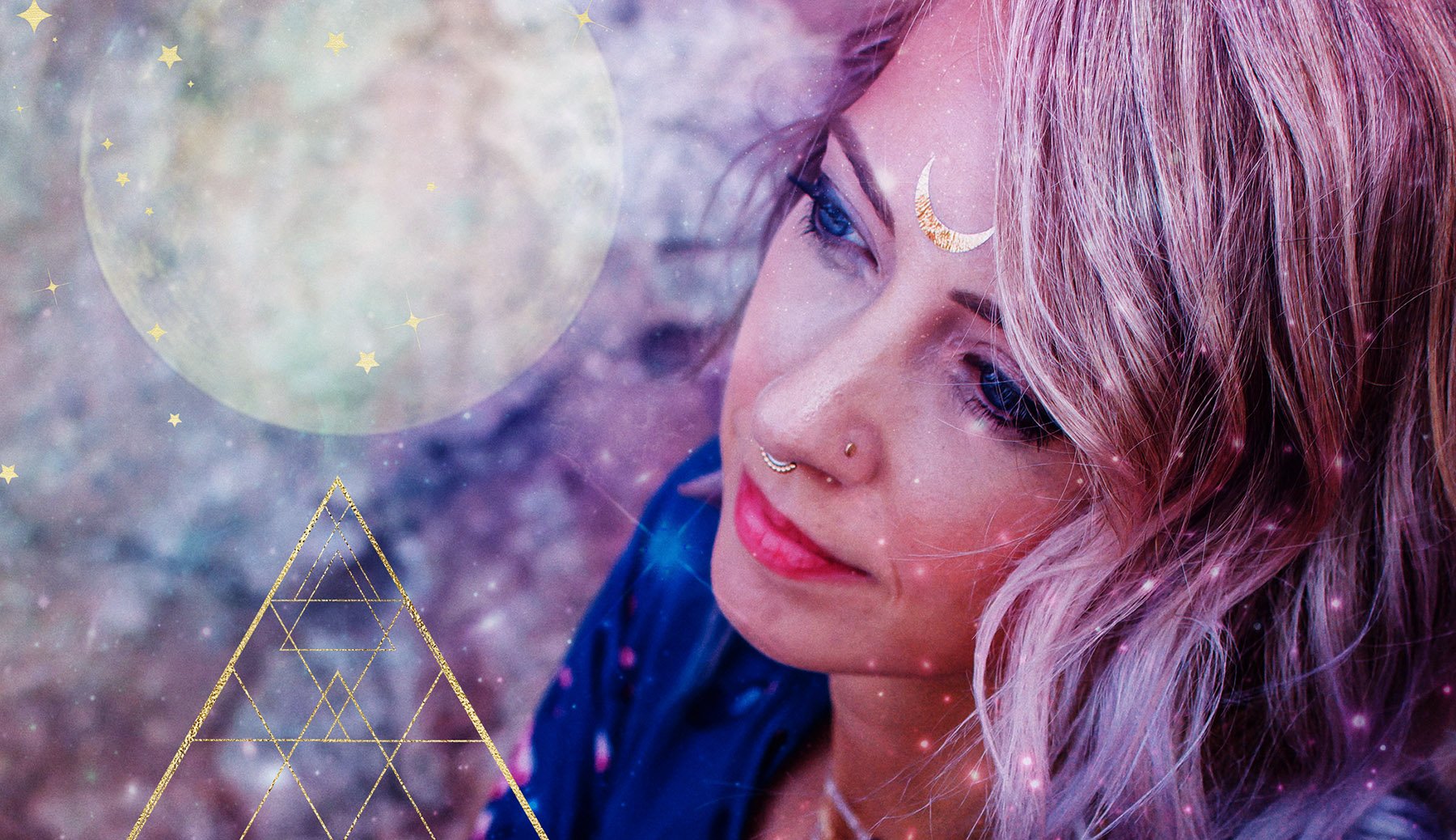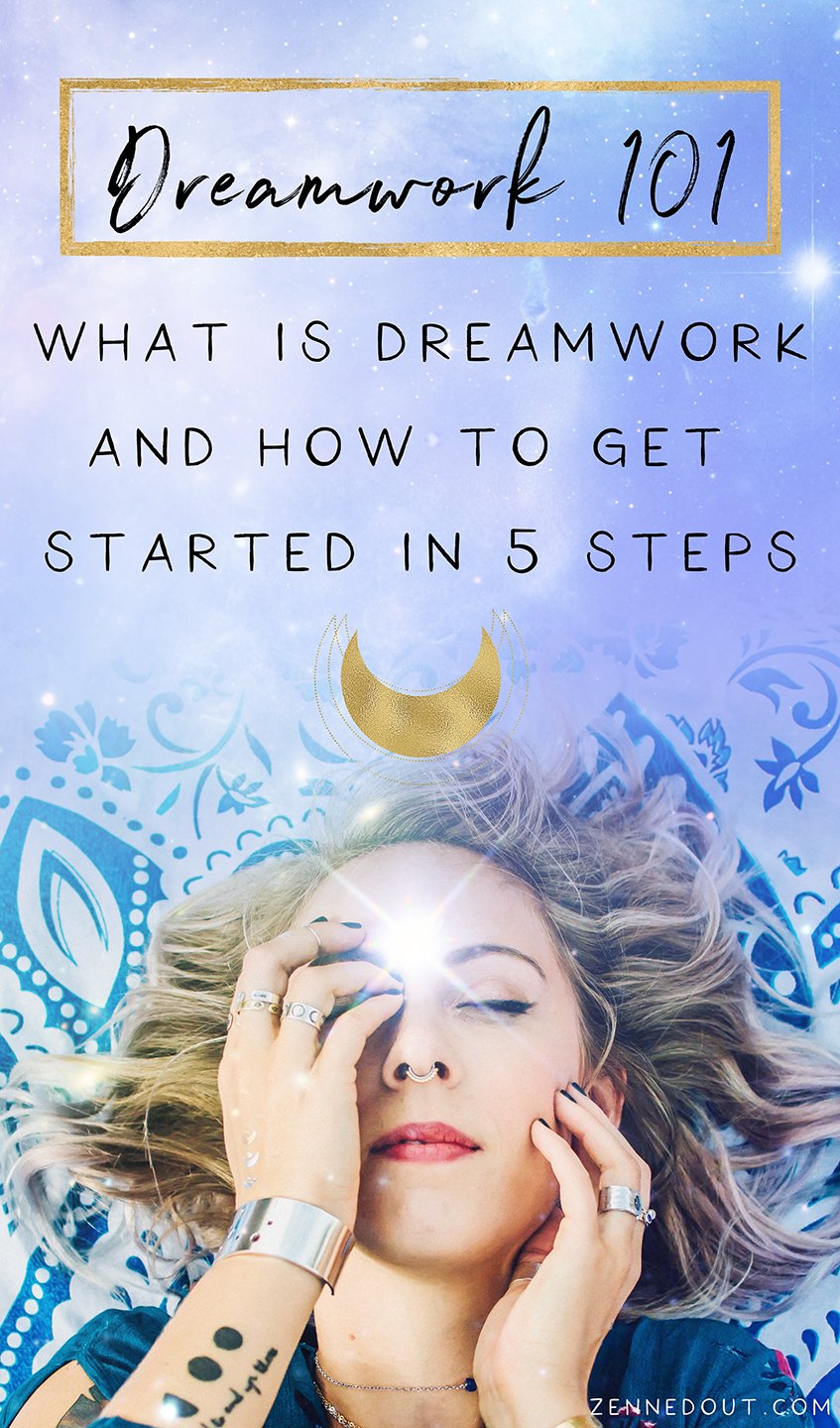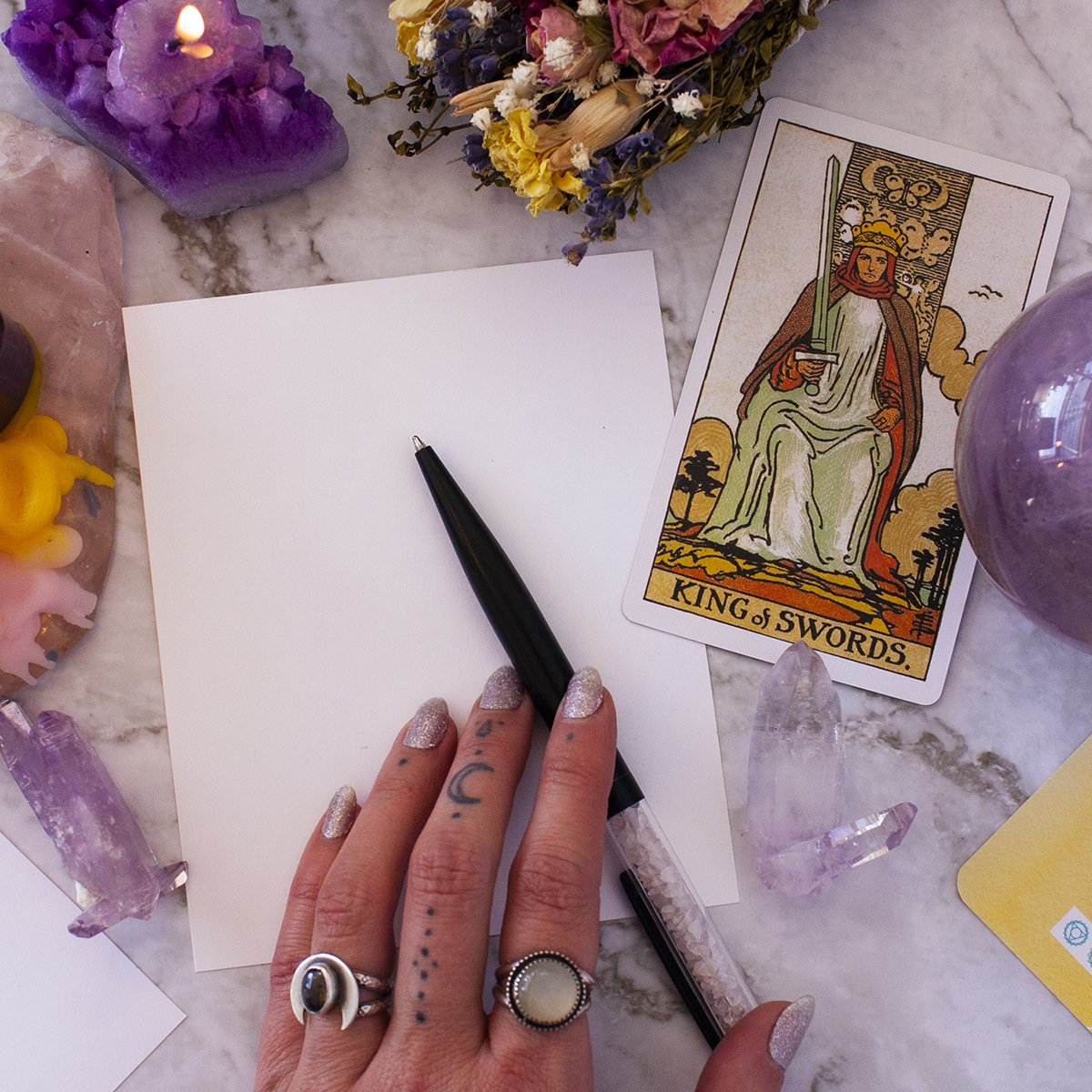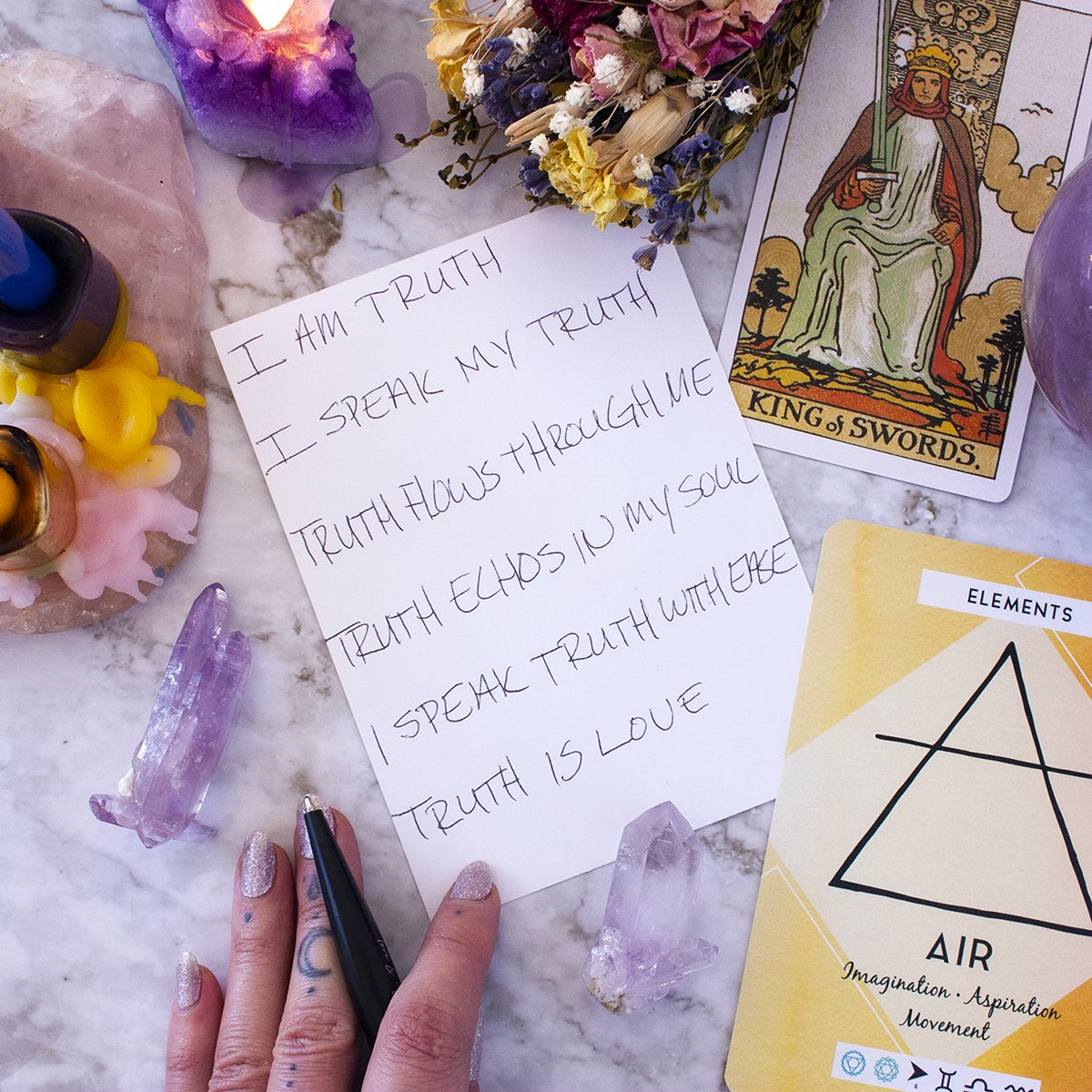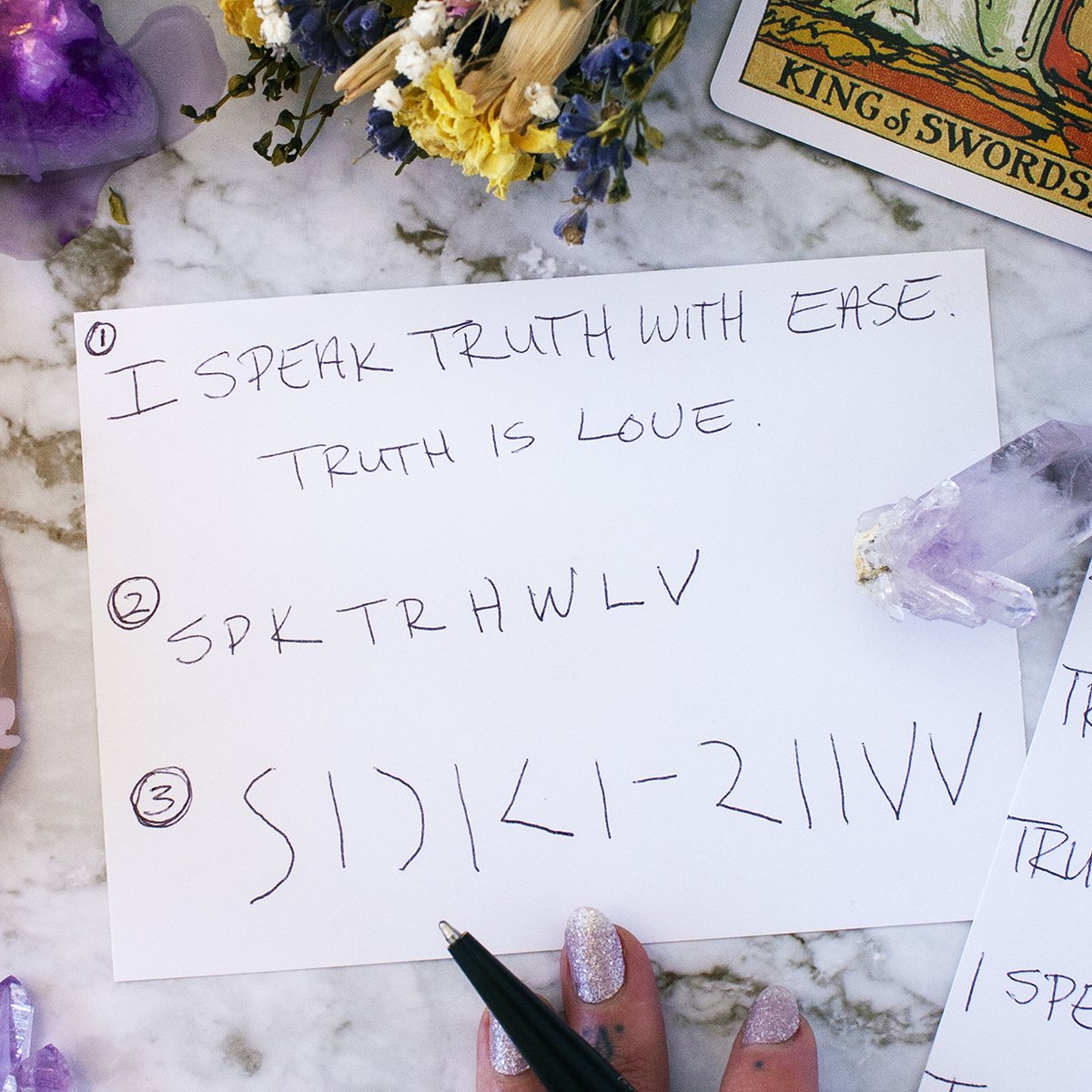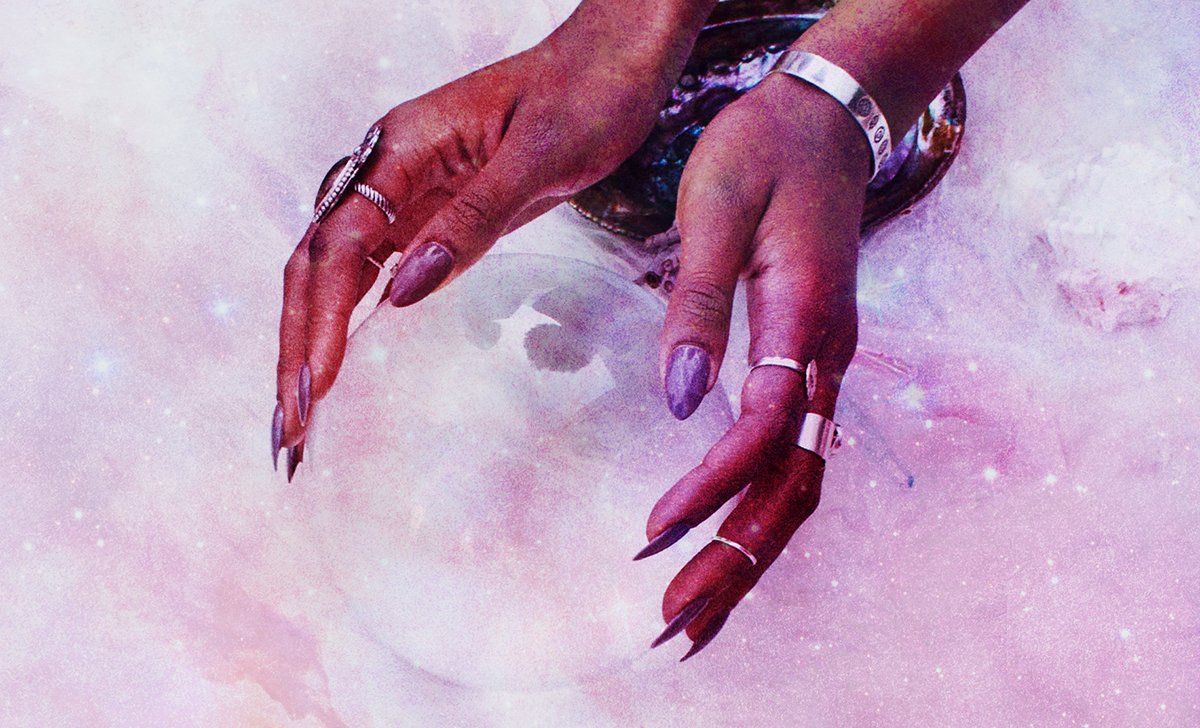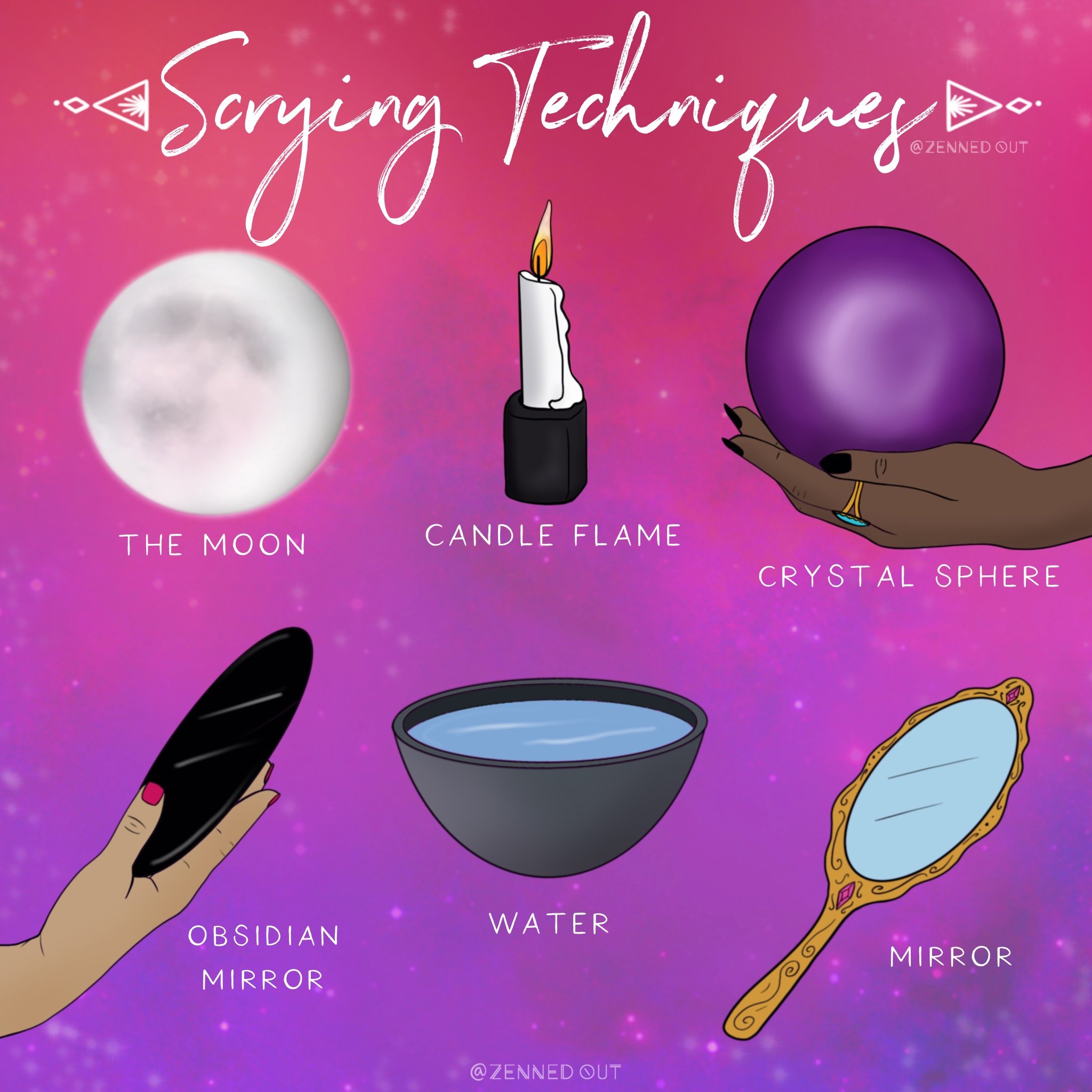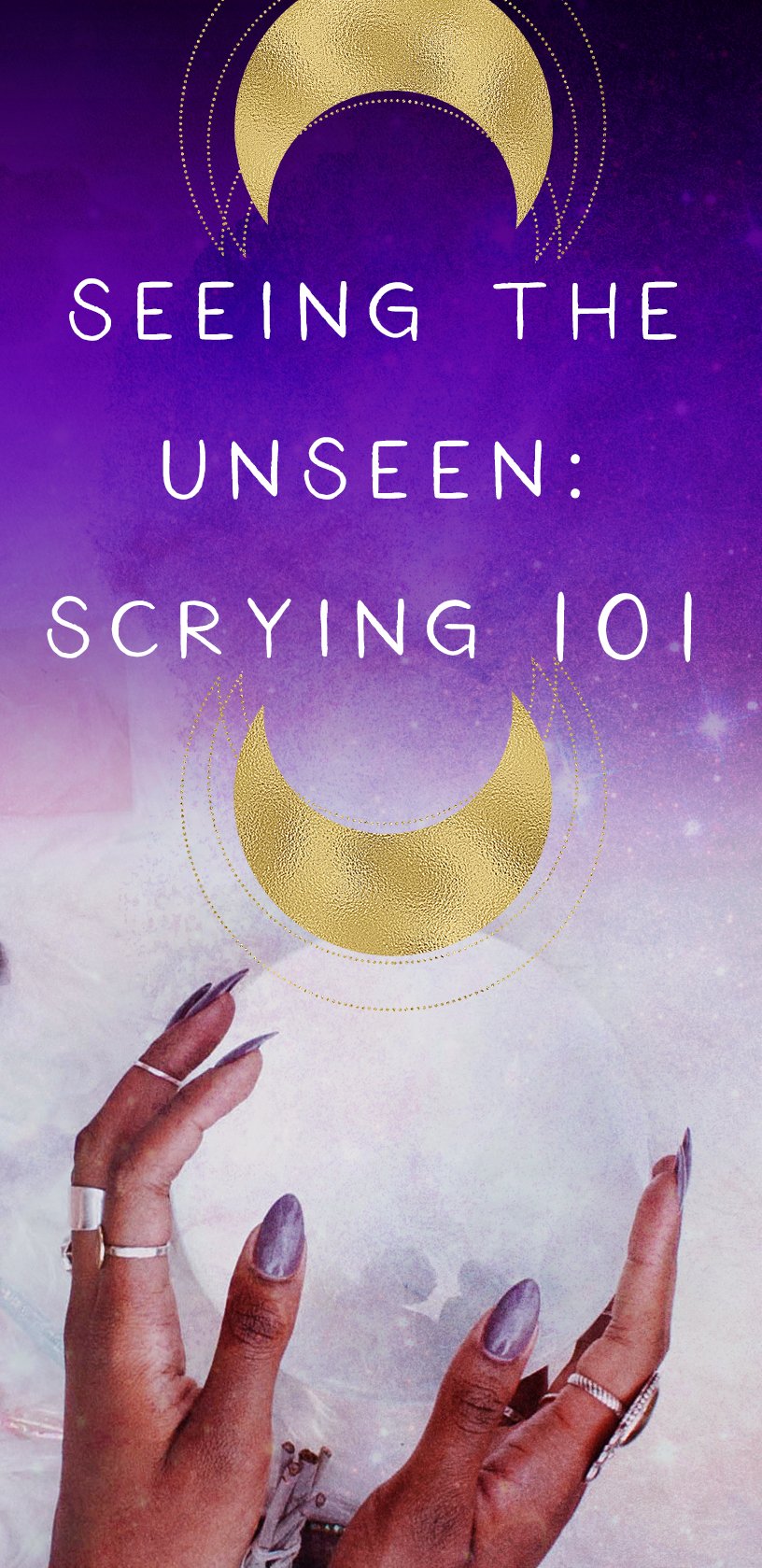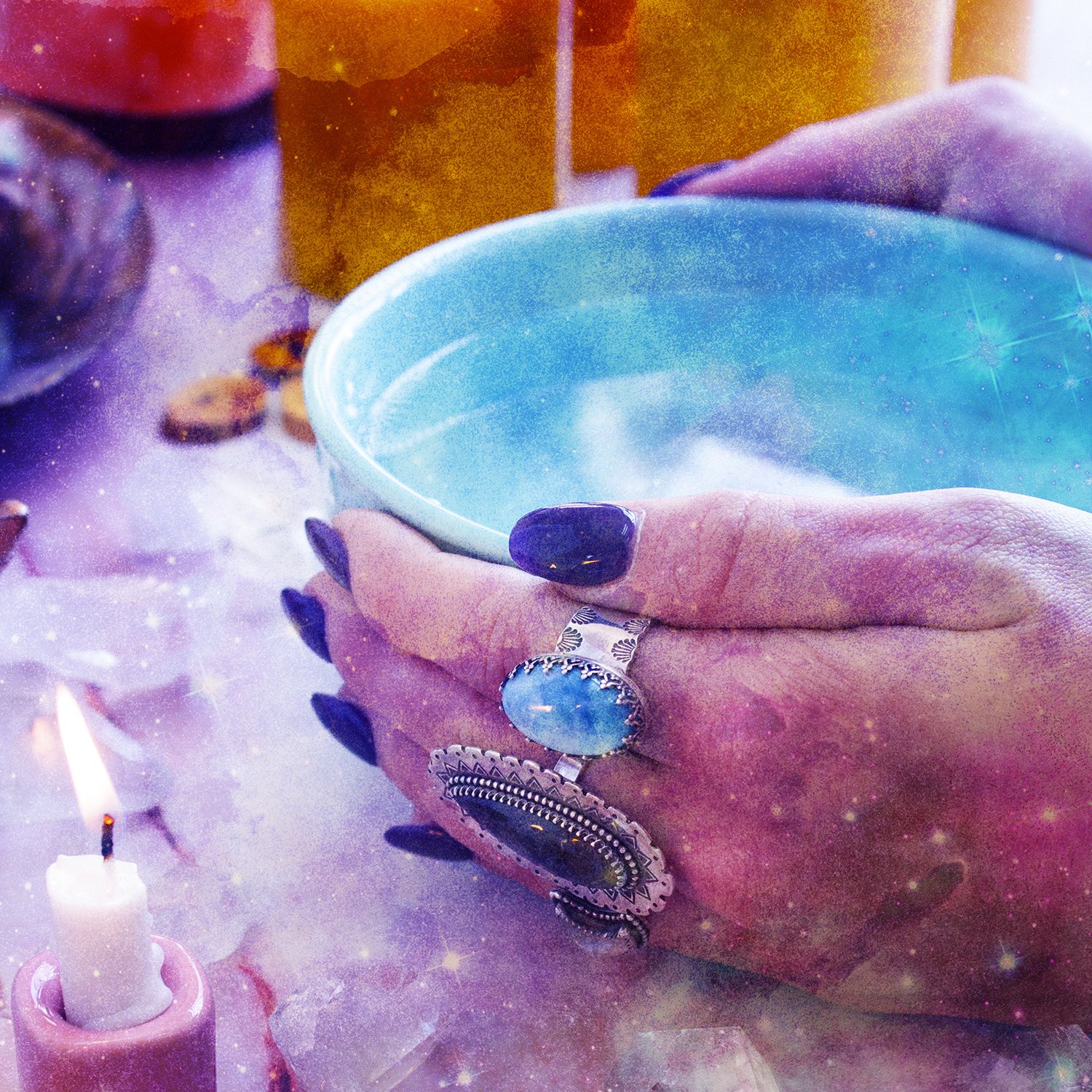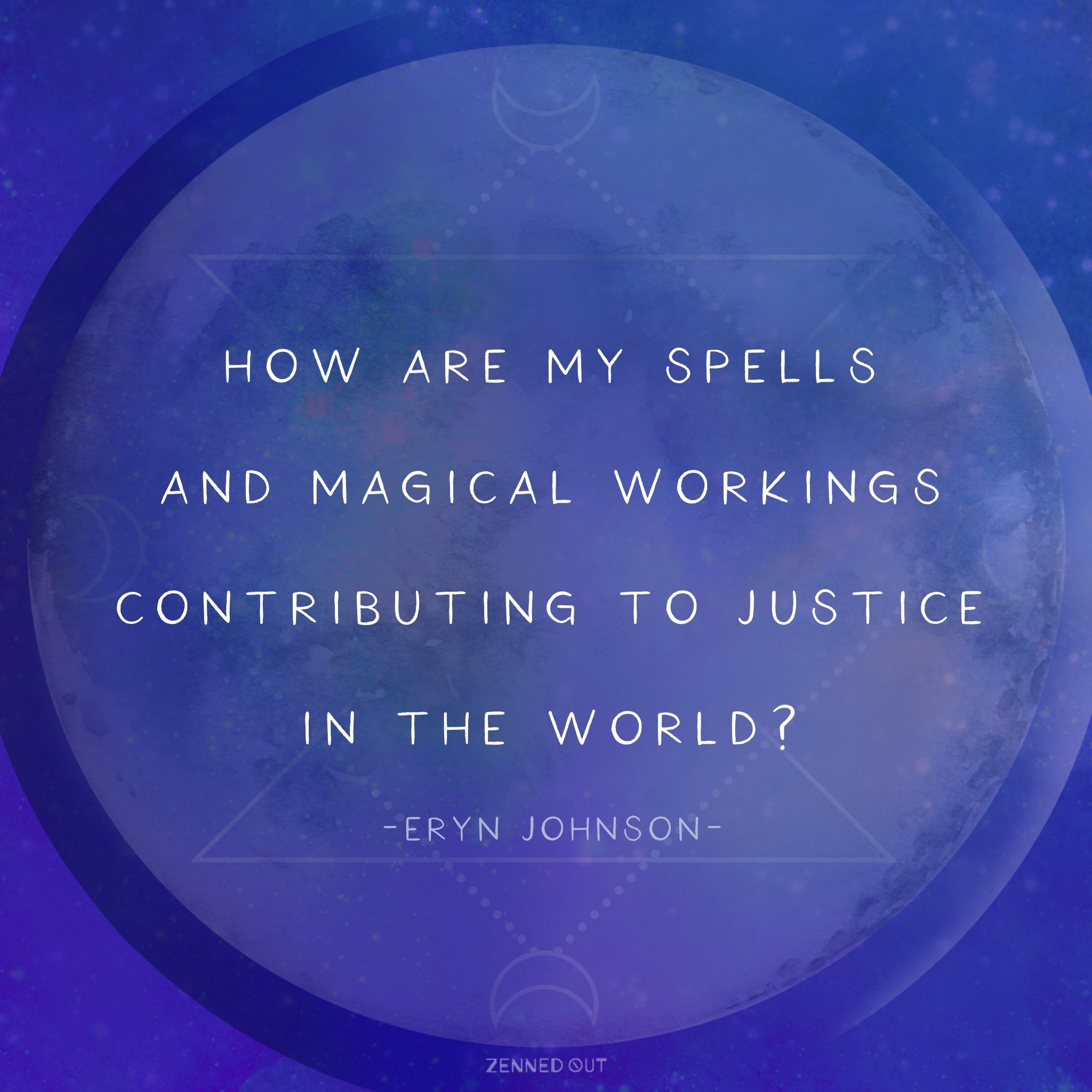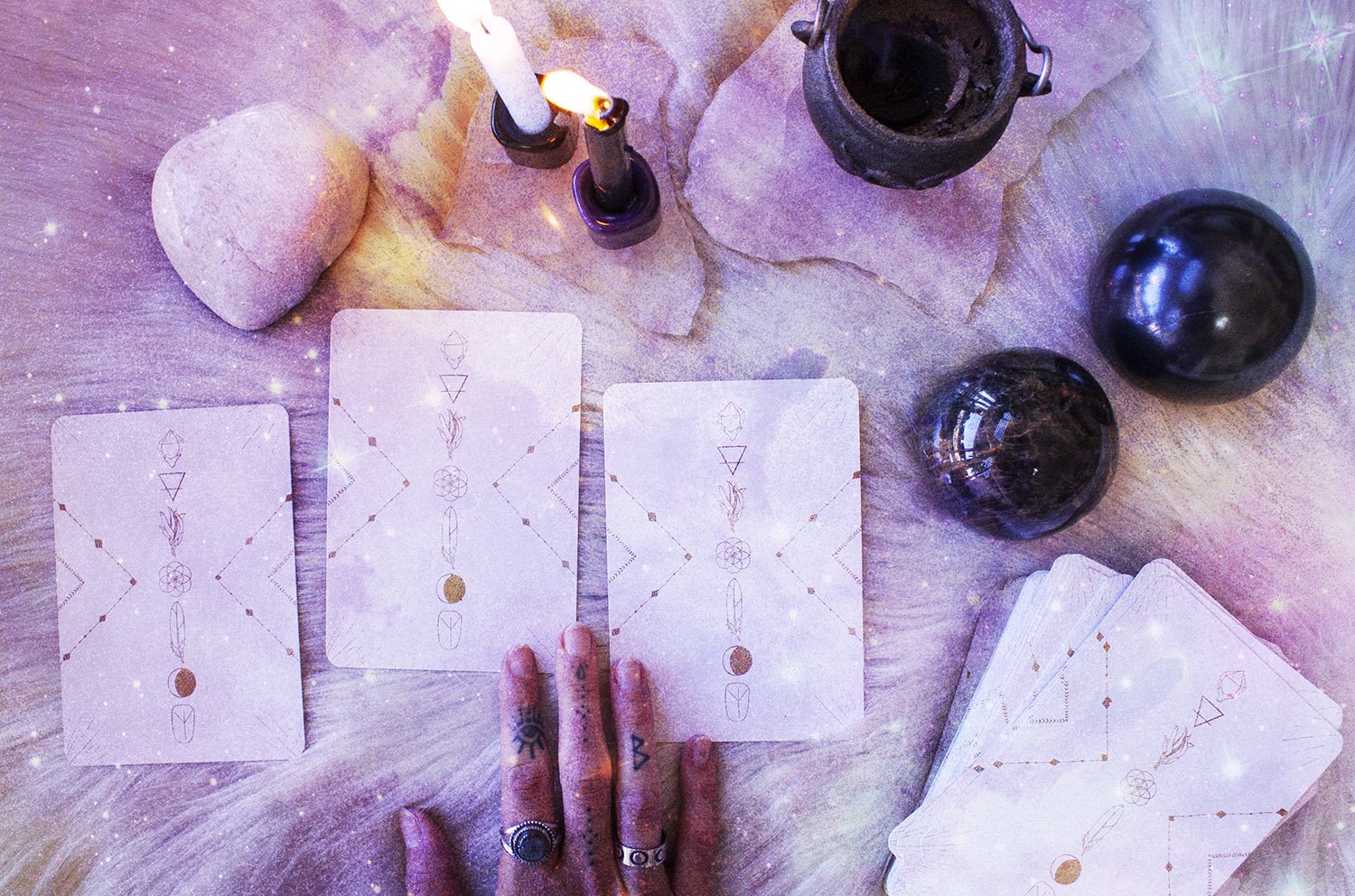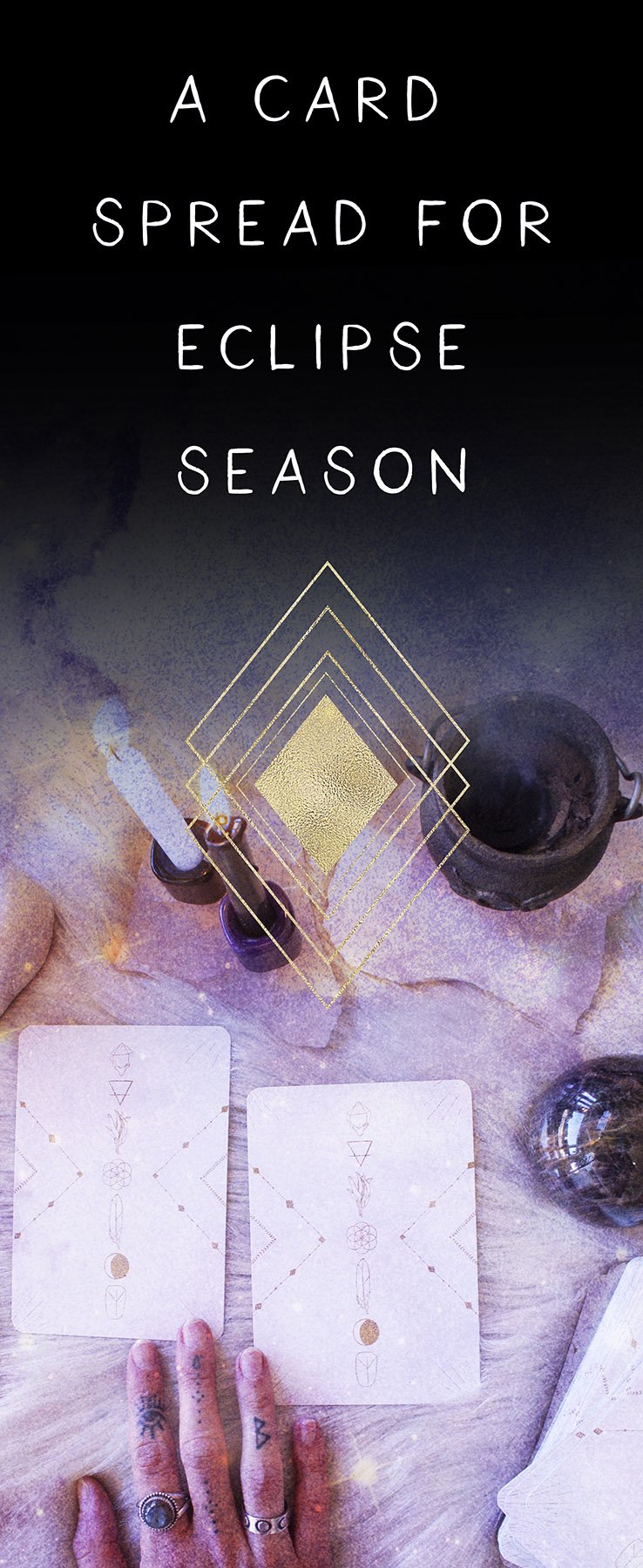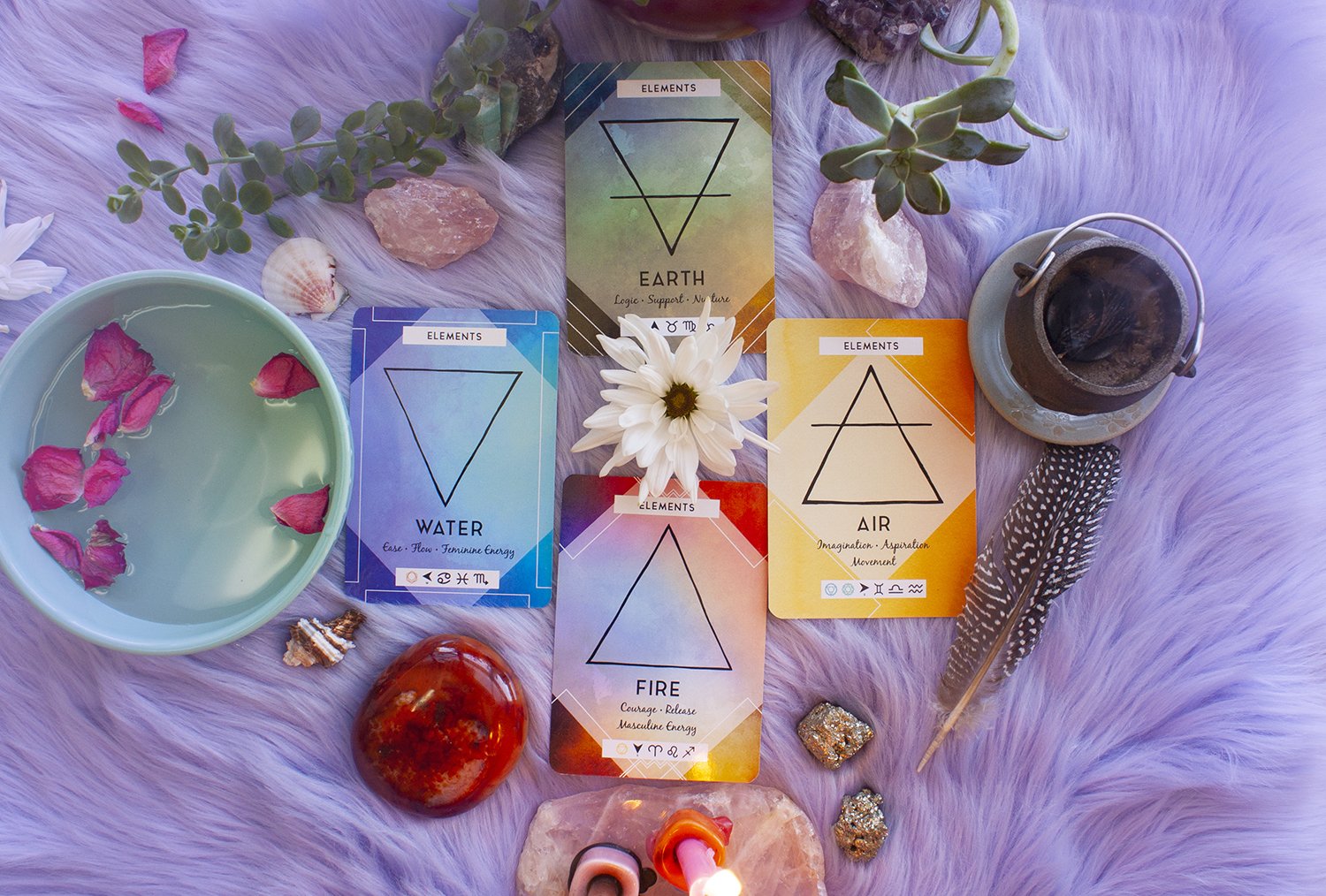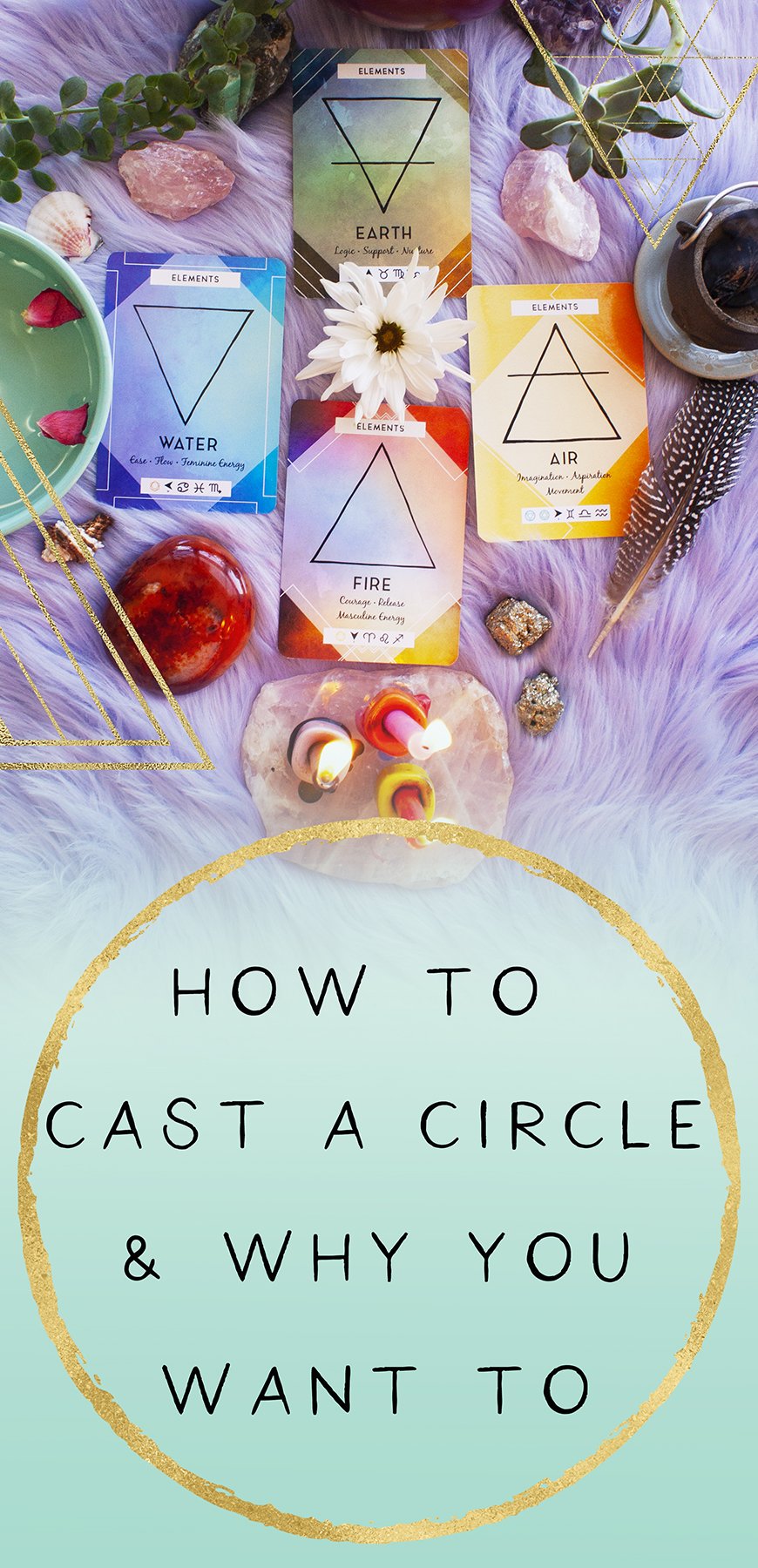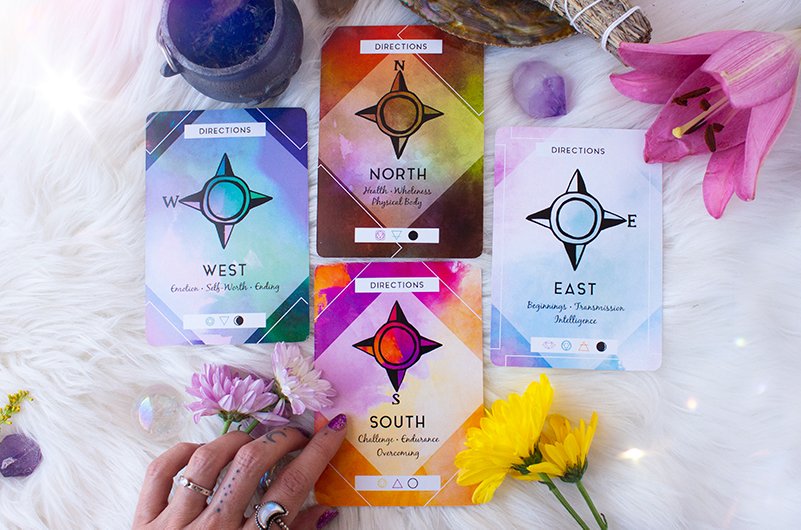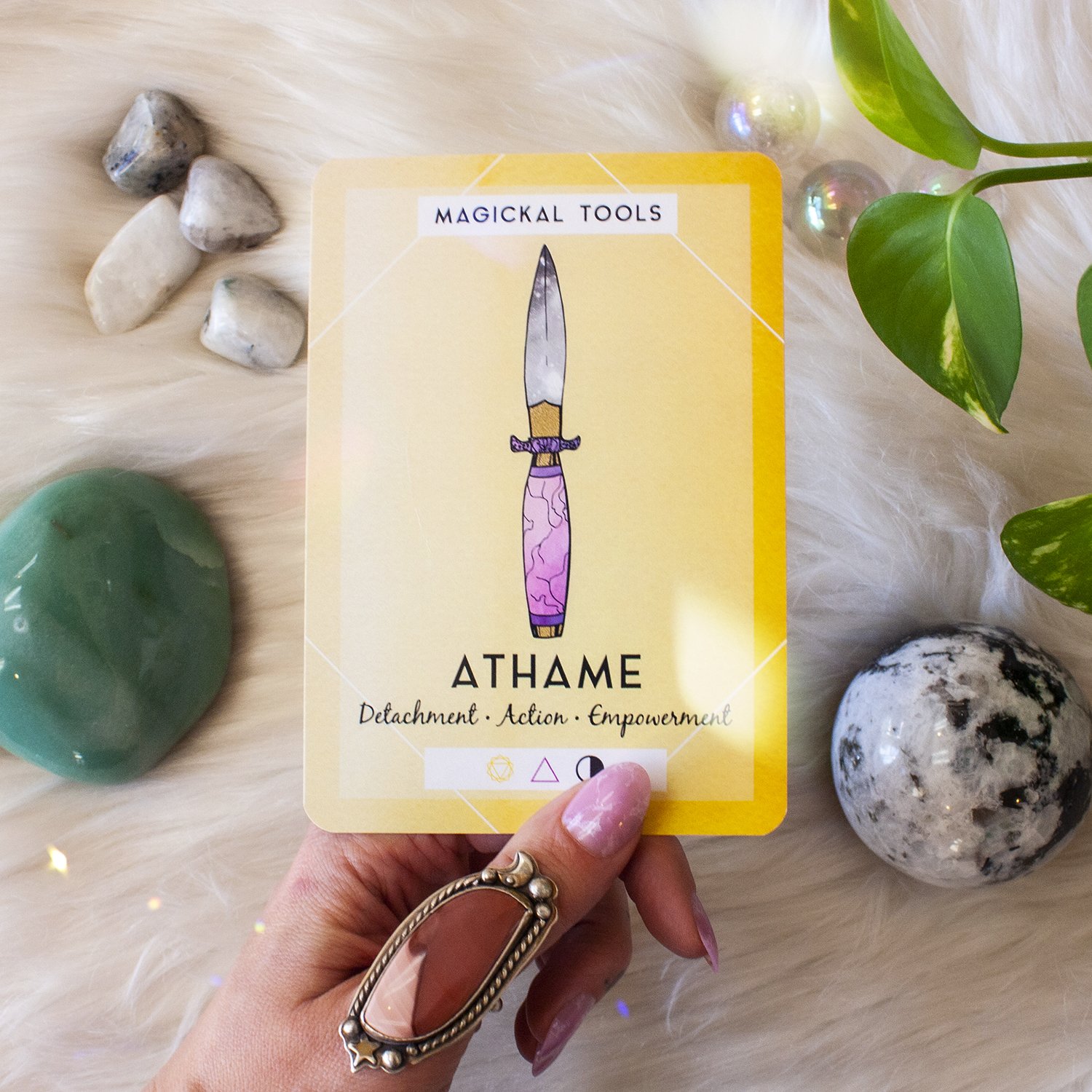7 Tarot Myths Debunked
In our culture, there is no shortage of myths about tarot. Many of us were raised with the perspective that tarot cards are “scary” or that they have something to do with the devil.Misinformation is rampant, but the truth is, tarot can be a powerful tool to help you hone your intuition, connect with yourself, deepen your relationship with spirit/universe/guides, make decisions, and more. In this post, I’ll be debunking some major myths about the tarot so that you can feel freer to work with the tarot in a way that feels really good to you.
In our culture, there is no shortage of myths about tarot. Many of us were raised with the perspective that tarot cards are “scary” or that they have something to do with the devil.
Misinformation is rampant, but the truth is, tarot can be a powerful tool to help you hone your intuition, connect with yourself, deepen your relationship with spirit/universe/guides, make decisions, and more.
In this post, I’ll be debunking some major myths about the tarot so that you can feel freer to work with the tarot in a way that feels really good to you. Check them out below!
MYTH 1: YOU MUST BE GIFTED YOUR FIRST DECK
This is a super common myth! Have you ever heard that you can’t buy your own deck and you must be gifted your first deck?
Tarot reader and author Theresa Reed told Refinery 29 that this myth is “total rubbish.” She says, “If I would have waited around for that to happen, I might not have started working with the tarot as soon as I did — if ever.”
I feel the same way. To me, this myth is just a form of gatekeeping in the tarot community. No one is exactly sure where this myth comes from, but it may be a legacy of 19th-century closed occult societies.
Regardless of where it comes from, there’s nothing wrong with buying a deck for yourself — tarot is a folk magic practice, and it belongs to the people, so you don’t need permission from someone else in the form of a gifted deck to start your practice. If you feel attracted to working with the cards - pick yourself up a deck!
Give this post a listen here.
MYTH 2: TAROT IS EVIL
Another variation of this myth is that tarot cards have something to do with the devil. I believe this myth originates from Christianity. There are various verses in the Bible about divination, “sorcery,” and mediumship that have been translated to be a condemnation of all occult, divination, and spiritual tools outside of Christianity.
This myth is also often perpetuated by the media, whose portrayals of tarot readers and cards have often been abysmal. Media is intended to be sensational, which means tarot cards are portrayed as evil or used for devil worship. Common tarot scenes show the “scary” cards with literal meanings - like the death card when someone is going to die or the devil card when something evil is going to happen.
This myth is easy to debunk when I ask myself a few questions:
Who benefits from me believing this myth (whether it’s dogmatic religion that wants me to rely on their truth rather than find my own through a tool like the tarot or a TV show that wants to make interesting TV and get viewers)?
Do I really think that Barnes and Noble are selling a tool to connect with the devil?
What have my experiences with the tarot been like?
Like with most things, we can use tarot in helpful ways and not so helpful ways. But the cards are not inherently evil, and we can use them in ways that support ourselves and our highest good.
MYTH 3: THE DEATH CARD MEANS YOU’LL DIE
Ah, another TV myth. Like I mentioned above, this card is often portrayed as a super scary card, and when it shows up in a reading, it could mean you’re going to die.
All tarot cards are neutral. There are no good or bad cards. Some cards may be more uncomfortable than others (and this will change depending on every person!), but no cards are in and of themselves bad.
So no, the death card doesn’t mean you’ll die. Usually, it means a transformation of some kind. It refers to deaths of a different kind - deaths of relationships, ways of being, of selves you have been, dreams, etc.
In the United States, we have a cultural aversion to the idea of death, and I think we disconnect from the idea of death happening all around us all the time throughout our lives. The death card breaks this fiction and reminds us that death is a natural process unfolding throughout the seasons and throughout our lives and that it clears the way for our evolution and growth.
That can be scary, too, of course - change is often hard. But next time you pull the death card, you can lean into that kind of scary and not worry that you’re going to die literally.
MYTH 4: TAROT IS ONLY USED TO TELL THE FUTURE
Tarot can certainly be used to predict the future. But in my belief, the future is not set. The future is always changing, and we are actively creating it with our energy and our decisions each day.
When I pull more predictive cards, I like to remember that I have the power to change the future and make different decisions if I don’t like the outcome card in front of me. This is a way to use tarot that feels more empowering and more honest.
But more often than not, I’m not using tarot cards to tell the future, and I think many modern readers will tell you the same. Fortune telling is one powerful way to use the tarot. Still, there are many other ways to work with the cards that can be even more powerful, in my opinion: to connect with yourself, to understand your inner world, to process feelings, to understand current energies, to make support decisions, to connect with your intuition, to heal, and more.
MYTH 5: YOU NEED TO BE PSYCHIC TO READ THE TAROT
I think this myth is rooted in the previous one: that tarot is only used for fortune-telling. When we know that tarot has many purposes, we understand that you don’t need to be psychic to read the cards.
You don’t need to be psychic to connect with your intuition, which is the most important piece of reading cards, in my opinion. Intuition can sometimes require some uncovering and trust work (click here for 3 daily actions to improve your intuition and here for 5 tips to learn how to trust your intuition), but it is innate and available to us all.
Reading the cards with your intuition could look like noticing how you feel about certain cards, paying attention to memories or images that come up around cards when you pull them (even if they don’t match with the traditional meaning of the cards), or meditating with cards to receive messages from them.
But regardless, tarot cards have meanings. You can study those meanings from different books and teachers and develop a rich and fulfilling tarot practice this way! As you learn to trust your intuition a bit more, weaving that practice into your work with your cards can add another meaningful layer.
MYTH 6: YOU CAN NEVER LET ANYONE ELSE TOUCH YOUR TAROT CARDS
This myth is rooted in the idea that the cards themselves contain magic or are magical. In my opinion, the cards themselves are a neutral tool and conduit. They don’t contain their own magic; youare the magic. So it doesn’t matter if other people touch them because they can’t take anything away from them.
If you don’t like other people touching your cards, that’s totally fine! But there’s no need to keep others from touching your cards out of fear that it will take away the deck’s magic or shift the cards' energy irreversibly.
In fact, many readers (myself included) like to have the querent shuffle the cards to infuse their energy and intention into the deck for a more powerful reading. If you feel the same, a regular cleansing process with your deck (click here to learn how to cleanse your cards) is all you need to keep your deck’s energy clear.
MYTH 7: REVERSED CARDS ARE BAD
When a card is reversed, that simply means it came out of your deck upside-down. Reading reversed cards in the first place is a matter of preference: some readers read them, and some will just flip the cards right side up and go with that meaning. As with most things tarot and intuition, there’s no right or wrong answer. Just do what works for you!
But whether you choose to read reversals or not, reversed cards are not inherently bad. They bring a different energy, certainly, and can add a layer of clarity to a reading, but they’re nothing to be afraid of. Reversed cards can mean blocked energy, more introspective energy, a softer meaning of the card, or maybe some fear around that card’s theme.
WANT TO LEARN MORE ABOUT THE TAROT?
Check out some of our other tarot blog posts:
6 Tips to Learn the Tarot Card Meanings Quickly
So you got your first tarot deck, did a couple of solo readings, and then never picked it up again? Or, you work with tarot regularly but find yourself frustrated with being so reliant on the guidebook? One of the biggest hurdles people face when getting started with tarot is learning the card meanings. This kept me from diving deep into the tarot for years, too; I get it!There are much easier techniques to learning the meanings of all of the cards besides memorizing a guidebook word for word for 78 different cards.
So you got your first tarot deck, did a couple of solo readings, and then never picked it up again? Or, you work with tarot regularly but find yourself frustrated with being so reliant on the guidebook? One of the biggest hurdles people face when getting started with tarot is learning the card meanings. This kept me from diving deep into the tarot for years, too; I get it!
There are much easier techniques to learning the meanings of all of the cards besides memorizing a guidebook word for word for 78 different cards. Not only is memorizing a guidebook of 78-card meanings not very feasible, but it’s also an intuitive disservice in working with the tarot.
What if I told you that you could have a robust knowledge of all 78 cards by learning only 36 correspondences? I know 36 is nothing to sneeze at, but here’s the thing, the 36 correspondences I’ll layout in this post will not only help you understand the energy of each tarot card but will also help you in nearly all other facets of spellwork and magick.
What are correspondences?
Correspondences are simply energies that play well together or match. Each card of the tarot has at least a couple of correspondences, and when you better understand each card's correspondences, you’ll also understand the energy of each card. The correspondences associated with tarot are not unique to tarot and relate to numerology, astrology, witchcraft, and more. Plus, there’s a good chance that you’re already familiar with some of the correspondences that I’m going to outline in this post. If you are, that’s great! You’re already a step ahead.
Before you dive in, correspondences and their meanings can be rich and deep. They can also vary somewhat from person to person. What I share here is enough to get you started to build a strong foundation, but I recommend digging deeper into the ones you’re less familiar with.
Dive deeper into tarot correspondences in my book, Understanding Tarot. You might also find that reading an introductory book on numerology or astrology will really deepen your understanding of those specific correspondences. You can also read up on numerology and the four elements right here on the blog! Click here for more on the elements and here for more on numerology.
Let’s dive in. Here are 6 tips to help you learn the tarot card meanings quickly.
1. Understand your learning style!
Before we jump into understanding the correspondences of tarot, you need to get super clear about how you learn and use that method as we dive into the correspondences. If you’re a visual learner, get a journal and start drawing and writing down what the correspondences below mean. If you’re an auditory learner, consider listening to an audiobook about the correspondences listed below. If you learn by doing, continue working with your tarot deck to weave this knowledge into your readings. Not sure how you learn best? Try a few different ways listed above and see what sticks.
2. Understand Basic Numerological Meanings
The largest part of a tarot deck, and for many, the trickiest cards to learn, are the numbered suit cards of the Minor Arcana (think 2 of cups and 4 of wands, etc.) Understanding the basic numerological meanings will make you feel MUCH more confident with these cards. There are ways to use numerology in the Major Arcana too, which you’ll be able to learn more about in my new book. For the minor arcana, use these numerological meanings to give you clues about what each card means.
New beginnings
Balance
Creativity
Foundations
Change
Partnership
Intellect
Mastery
Endings
This one is kind of unique to tarot because, in traditional numerology, you always reduce down to a single-digit between 1-9. Fortunately, the meaning often in regards to the tarot is pretty obvious. It points to an end of a cycle and transitioning to a new phase. It has a slightly different feel than 9 in that it signals a willingness to move on.
3. Understand the 4 Elements
Earth, air, water, and fire are, in my opinion, foundational in any magickal or divination practice. The elements are the energies that we’re made of and can be utilized in nearly all facets of a spiritual and magickal practice! Each of the four elements corresponds with a suit of the minor arcana, shown here.
Cups- Water
Pentacles- Earth
Swords- Air
Wands- Fire
Now that you know more about the meanings associated with the numbered cards of the minor arcana, you can also apply the corresponding element. Now you have two things to go off of to understand the energy of each card better. Here’s a list of how the energy of the elements express themselves.
There are ways to apply your understanding of the elements to both the minor arcana's court cards and the major arcana. I discuss these more in my book, but this is a great place to start!
4. Understand Zodiac and Planetary Meanings
We’ll begin to transition more to the major arcana for this one. Each of the major arcana cards corresponds with either a planet or a zodiac sign, giving it a unique energy.
The Fool - Uranus
The Magician - Mercury
The High Priestess - The Moon
The Empress - Venus
The Emperor - Aries
The Hierophant - Taurus
The Lovers - Gemini
The Chariot - Cancer
Strength - Leo
The Hermit - Virgo
Wheel of Fortune - Jupiter
Justice - Libra
The Hanged One - Neptune
Death - Scorpio
Temperance - Sagittarius
The Devil - Capricorn
The Tower - Mars
The Star - Aquarius
The Moon - Pisces
The Sun - The Sun
Judgment - Pluto
The World - Saturn
Here are examples of how these energies express themselves. Zodiac Signs
Planetary Meanings
Sun - Ego
Moon - Subconscious
Mercury - Communication
Venus - Love
Mars - Warrior
Jupiter - Expansion
Saturn - Restriction
Uranus - Revolutionary
Neptune - Dreams
Pluto - Transformation
5. Learn how Astrological Energies Correspond with the Elements
I imagine correspondences as a web of intersecting energies that play off of each other. When you understand how these different energies match up or repel each other, it will take your understanding of the tarot cards' meanings to a deeper level.
Each of the zodiac signs and planets corresponds to an element. Now, with your understanding of the elements and basic astrology, you can weave these meanings together. Here’s a list of how the planets, zodiacs, and elements correspond with one another.
Aries - Mars - Fire
Taurus - Venus - Earth + Water
Gemini - Mercury - Air
Cancer - Moon - Water
Leo - Sun - Fire
Virgo - Mercury - Earth + Air
Libra - Venus - Air + Water
Scorpio - Pluto - Water
Sagittarius - Jupiter - Fire
Capricorn - Saturn - Earth
Aquarius - Uranus - Air
Pisces - Neptune - Water
With this information combined, we can see that the Empress corresponds to Venus, the earth element, and Taurus. Therefore the Empress card relates to love, beauty, and creation from an earthly and material perspective.
6. Pair this Knowledge with your Intuition
Think of all of this correspondence knowledge as a way to bolster your intuition. They’re not the end all be all of learning the tarot, but they go a LONG way! The more comfortable and confident you become in understanding these correspondences, the easier it will be for you to intuit the card meanings for yourself and others without a guidebook. The correspondences are better than a guidebook because they give you nudges and insights about what the cards have to tell you, rather than a definitive answer.
Learn more about building up your intuitive muscles here in this previous post.
Now it’s time for you to put these tools into practice. Find a way to learn them that works for you, and watch your ability to understand the tarot card meanings flourish!
Dreamwork 101 // What is Dreamwork and How to Get Started in 5 Steps
Dreamwork is the practice of tending to our relationship with our dreams. We’re dreaming every night, but many of us barely remember our dreams, or if we do, don’t spend much time thinking about them or working with them.(How often have you dismissed a dream as, “oh, it was just a dream?”)
Dreamwork is the practice of tending to our relationship with our dreams. We’re dreaming every night, but many of us barely remember our dreams, or if we do, don’t spend much time thinking about them or working with them.
(How often have you dismissed a dream as, “oh, it was just a dream?”)
But dreams can have a lot to teach us and offer us when we enter into a deeper relationship with them. The dreamworld is rich with feelings, desires, needs, and possibilities. Our understanding of what the dreamworld evokes and presents can support our physical lives and our connections to ourselves.
In this blog post, I’ll share a bit about how to start a dreamwork practice of your own.
Dreamwork Lineage
First, I’d like to share my dreamwork lineage. What I know about dreamwork comes from the work of these folks in particular, as well as my own intuition and my ancestors:
These are wonderful people to go deeper into dreamwork with if you feel so called.
1. Support Dream Recall + Sleep
The simplest of ways to begin supporting your dreaming is by supporting sleep and dream recall. It’s difficult to consciously work with our dreams if we’re not sleeping well or can’t remember our dreams when we wake up. Everyone is different, but here are some things you might like to explore to support your sleep:
Set screen time boundaries for a certain amount of time before bed
Drink a tea to support your sleep, like chamomile (always do your own research and check with a professional before ingesting herbs)
Create your own sleep ritual that helps you shift into rest mode
Meditate and/or do a gentle, restorative yoga practice
Take a few minutes to journal brain-dump style to help clear your mind.
To support your dream recall, there are a few things I find helpful:
Set an intention to dream and to remember your dream(s) before you go to sleep (you can write this down, say it out loud, or just tell it to yourself silently)
Take a few minutes in bed in the morning before you get out of bed (or look at your phone) to give yourself space to remember your dream.
Create a dream altar and meditate at it before bed to welcome your dreams to come
Pay attention to the dreams you do receive by tending them (more on that below!)
2. Start a Dream Journal
This is probably the number one tip anyone you ask about dreamwork will give you, and with good reason! A dream journal creates a container for tending your dreams, helps solidify your intention to connect with your dreams, and helps you understand your dreams.
I recommend choosing a dedicated journal for your dreamwork and placing it on your dream altar when you’re not using it if you have one. As soon as you wake up (definitely before you look at any devices), put pen to paper and record your dream. Try recording your dreams in the present tense to honor its aliveness (for example, instead of "I was walking by a river,” try “I’m walking by a river).
If it feels available to you, you might like to marinate in the dream in bed for a few minutes before actually getting up and reaching for your journal to record.
3. Explore Dream Feelings & Textures
After you record your dream, there are many ways to work with it more deeply and explore the messages it might have for you.
I like to explore the dream textures: what are the textures, sights, smells, tastes, sounds of the dream? What do those senses mean for you and evoke for you? How do they make you feel? How does the dream, in general, make you feel?
4. Understand Dream Associations
As you work with the dream you’ve recorded, notice what stands out to you. Maybe your red dress feels particularly alive, or the hawk sparks something for you, or you feel curious about a figure in your dream.
Whatever you feel curious about, do a bit of freewriting about it. List out: what does this thing make you think of? How does it make you feel?
For example, some associations that come up with hawks for me:
Hawk feather
Maggie Smith’s poetry book Good Bones
Mothers
Protecting your children
Imagination
Play
Notice how I’m not so focused on the hawk itself, but I follow the threads of what each thing is associated with! Now I have something interesting to work with and can ask myself questions like, "what’s my relationship with play right now?"
Some of the associations you make might really surprise you and can offer deeper insight into your dream.
5. Assign Dream Correspondences
As you continue to work with your dreams, you start to develop some personal symbols and correspondences.
Like you saw above in my example with the hawk, I could make a section in my journal where I note that hawk led me to mothers and children and play. When I see a hawk again in my dream, I have that reference and can ask myself if/how it applies to this dream.
Over time, you can deepen your understanding of your own personal dream symbols and correspondences. I love this practice so much because, to me, it’s not about what a certain symbol means but about what it means to you, how it feels in your body, how it resonates with your ancestry. That’s what feels potent and powerful!
Dreams Aren’t Your Personal Vending Machine
It feels important to state that working with dreams isn’t just asking a question and receiving an answer. Generally, it’s not a simple or linear way of working. There isn’t one true or hidden meaning that we need to uncover.
In my eyes, dreams and the dreamworld are alive. So it truly is a practice of engaging in relationship with, of exploring. You might like to ask yourself, "how can I be in equal exchange with my dreams?" How can I honor the dream world and not just extract from it?
Dreams have such potential to expand us out of binary thinking and into visionary possibilities, especially if we acknowledge that power and allow them to take us there!
Going Deeper with Your Dreams
Another way to explore dream tending and go a bit deeper is by asking for a dream. I share how to do this in the dreamwork ritual I shared for Pisces season, which you can find here.
Feel free to contact us and share: how is your dream practice going? How is your relationship with your dreams evolving?
Card Spread & Sigil Ritual for Aquarius Season
Welcome to Aquarius season! Our fixed air sign, Aquarius energy is about authentic expression, bringing forth the new age and the next world, and upgrading the collective to its highest expression.To learn more about Aquarius energy, you can check out this blog post. In this post, I’ll be sharing a card spread and a sigil ritual to help you tap into the healing invitations of the Aquarius season. Practice these Aquarius offerings together or separately, whatever feels best for you. Scroll down to explore both of them!
Welcome to Aquarius season! Our fixed air sign, Aquarius energy is about authentic expression, bringing forth the new age and the next world, and upgrading the collective to its highest expression.
To learn more about Aquarius energy, you can check out this blog post. In this post, I’ll be sharing a card spread and a sigil ritual to help you tap into the healing invitations of the Aquarius season.
Practice these Aquarius offerings together or separately, whatever feels best for you. Scroll down to explore both of them!
Card Spread for Aquarius Season
For this card spread, you’re welcome to use a tarot deck or an oracle deck. In the spread, we’ll explore the Aquarius themes of authenticity and belonging.
I invite you to create a ritual space for you and your deck to communicate by taking a moment to ground and center yourself; lighting some incense, herbs, or candles that help you drop into your heart space; and opening to allow messages to come through.
When you feel centered and ready, shuffle your deck and draw a card for each of the following points:
Where do I have a block from authentic expression?
How can I support my authentic expression in this area?
What's keeping me from feeling a sense of belonging?
How can I create deeper belonging within myself?
Who will I be in my most authentic expression?
Take some time to journal and/or meditation on your cards to connect with the full meaning they have to offer you.
Sigil Ritual for Aquarius Season
For this ritual, we’ll be creating a sigil to help you embody your truth. As an air sign, Aquarius evokes truth. You can see this in the King of Swords, our Aquarius card in the court cards of the tarot. It invites us to speak and embody our truth, to take up space with our voice and our message, and to not shrink - even when we’re afraid. When we embody our truth and share our voices, we create more authentic belonging. Associated with group energy and friendships, this is something Aquarius energy is deeply connected to. If sigils are new to you, think of them as a powerful symbol that is completely personal to you. What you’ll need:
paper
pencil
optional: crystals, herbs, or candles that support the element of air like yellow or blue candles, mint or citrus, and amethyst or kyanite.
Ritual Steps:
1. As with the card spread, open your ritual by taking some time to ground and center yourself. You might like to visualize yourself sending roots down into the core of the earth, take some deep breaths, place your hands on your body, or do something else that feels grounding to you.
2. After you ground, you might like to cast a circle to protect your ritual space and invite any well ancestors, spirit guides, or other loving beings you have relationships with to join you in ritual.
3. When you’re ready, it’s time to create your sigil. Write down some phrases and affirmations on your paper that support you in speaking your truth. Just let them flow! Some phrases to get you started: I EMBODY MY TRUTH. or I AM TRUTH.
4. After you write them down, sit with the phrase (or phrases) you wrote. If you wrote multiple phrases, speak them out loud and see which one lands in your body. Choose one that feels alive and supportive.
5. Re-write that phrase or phrases on a new page. In the next few steps, you’ll work towards simplifying and unifying this phrase into a single symbol.
6. Re-write the phrase again, removing all of the repeating letters and vowels.
7. Re-write this line, turning the remaining letters into simpler symbols or shapes, like this.
8. Connect the lines together into a symbol in a way that feels intuitive and natural to you. This can be as simple or as elaborate as you’d like. As you create, breathe deeply and focus on your intention.
Tip: If drawing isn’t natural for you, this might feel uncomfortable, and that’s okay! Focus on the intention of your statement rather than what the sigil looks like. Remember this is a symbol for you and you alone.
Tip: Your sigil will look different than the one pictured.
9. When you’re ready, it’s time to activate your sigil. You can do this in many ways, but for this ritual, I recommend a brief meditation.
10. Place your sigil to your heart, with your palms on top of it, and breathe deeply. Visualize light (any color that comes intuitively is great) flowing from your heart to the sigil, activating each piece of it. Spend some time here letting energy flow, and when you feel an energy shift you’ll know that your sigil has been activated.
11. Close your ritual by placing your sigil on your altar, under your pillow, on your bedside, or somewhere else that you’ll see it regularly and be reminded of its power.
Wishing you a nourishing Aquarius season, and please feel free to share your ritual experience with us on Instagram!
Seeing the unseen // Scrying 101
Scrying is an ancient divination practice where you connect with your intuition and work to make the unseen seen by gazing onto a reflective surface.Scrying is a broad practice, therefore mentions of it pop up in a variety of places throughout history. Scrying is referenced in ancient Egypt, England, Greece, and Persia (to name a few.) Nostradamus reportedly relied on scrying for many of his predictions as well. The tools you can use for scrying are as vast as its history. You can use crystals, water, the moon, fire, smoke, a mirror, or really any reflective surface.
Scrying is an ancient divination practice where you connect with your intuition and work to make the unseen seen by gazing onto a reflective surface.
Scrying is a broad practice, therefore mentions of it pop up in a variety of places throughout history. Scrying is referenced in ancient Egypt, England, Greece, and Persia (to name a few.) Nostradamus reportedly relied on scrying for many of his predictions as well.
The tools you can use for scrying are as vast as its history. You can use crystals, water, the moon, fire, smoke, a mirror, or really any reflective surface.
Artwork copyright Cassie Uhl 2020-infinity, please credit if shared.
Though clear crystal balls work for scrying and are commonly shown as a scrying tool, it is not the only kind of crystal used for this practice. Black obsidian mirrors are commonly used for scrying, but really any crystal with a reflective surface will do. You may even decide that you'd like to use a specific crystal in alignment with your desires for a scrying session. Sphere, larger palm stones, and flat mirrors or slabs all work well for this practice.
As varied as scrying is, the piece that remains consistent is the desire to reach an altered state to receive visions. The visions you receive from scrying could be from spirit or your subconscious. That’s for you to decide.
I love scrying for its power and simplicity. In this post, I’ll be sharing how to scry! Keep reading for five steps to try scrying for yourself.
A note on working with the moon. The full moon and the dark moon are ideal times to try this practice. I like scrying with the full moon to help illuminate and the dark moon for going within and accessing intuition. Don’t let the phase of the moon stop you from trying this practice; these are just suggestions.
Getting started with scrying:
To begin your scrying practice, create a ritual space for yourself, and gather your bowl and water. (As I walk you through scrying, I’ll be using the example of a bowl of water, but remember that there are many other ways to scry that I shared above.)
You’ll want to be in a dark room with only one or two candles lit.
Once your space is ready, enter a trance state through meditating, energy work, drumming, chanting, breathwork, or any other practice that helps you drop into your subconscious mind.
Once you feel like you’re in an altered state of consciousness, relax your eyes and gaze into your bowl of water. Breathe deeply, let yourself soften, and ask a question silently (for example, what is holding me back in X situation? Or what do I need to know about Y?).
Gaze into the bowl and let yourself see what you see. It may take time for images to come up, but if you stay focused and present, they will. Allow the images, words, and sensations to flow, rather than holding on to them tightly.
When you feel like you’re done, you’re done! Spend some time journaling about what you felt and saw to help you answer the questions you came to receive answers for.
Remember, the subconscious mind works with symbolism, so don’t discount anything that you see even if you’re not quite sure what it means at first! Think of the information you receive, like the symbolism in dreams: sometimes we are left with more questions than answers. Sometimes the questions are the answers. Sometimes a thread is what you are offered, and you can choose to follow it or not. Sometimes symbols may not mean anything at first but are asking to be engaged with over time.
Let the process unfold, and see what comes up for you!
Spellwork and Witchcraft Ethics
When we understand how powerful witchcraft and spellwork can be, we know that there is as much potentiality for causing harm as there is for healing.I don’t believe that ethics in this area (or any, really) are black and white or something that can be written in a post and passed right along to you. I think ethics are both nuanced and personal. So in this blog, I’ll be sharing a bit of my own thoughts about spellwork and witchcraft ethics, and offering some different areas of reflection for your own spellwork and witchcraft ethics.
When we understand how powerful witchcraft and spellwork can be, we know that there is as much potentiality for causing harm as there is for healing.
I don’t believe that ethics in this area (or any, really) are black and white or something that can be written in a post and passed right along to you. I think ethics are both nuanced and personal.
So in this blog, I’ll be sharing a bit of my own thoughts about spellwork and witchcraft ethics, and offering some different areas of reflection for your own spellwork and witchcraft ethics.
CULTURAL APPROPRIATION + CONSUMPTION
Ijeoma Oluo, author of So You Want to Talk About Race, wrote for Medium, “Cultural appropriation is the misuse of a group’s art and culture by someone with the power to redefine that art and, in the process, divorce it from the people who originally created it.”
Cultural appropriation is rampant in the spirituality, new age, and witchcraft communities. Sacred indigenous plants are bought and sold by white folks, indigenous knowledge is whitewashed, repackaged and sold, and practices are stolen from cultures of color.
The impacts of cultural appropriation are not just personal, they widely function to continue to funnel power towards white folks and away from Black folks, Indigenous folks, and other people of color.
I also personally feel that working with tools and practices from our own ancestry are always going to be more powerful than working with tools and practices that are not from our own ancestry!
Some reflection questions for your own practice around cultural appropriation:
What tools are you using in your magical practice, and where do they come from? If they are from cultures other than your own, how are you giving back, uplifting and supporting those cultures and peoples?
Are they sourced in ways that feel good to you and aligned with your values (for example: are your crystals mined by children? Are trees being chopped down for your Palo Santo?)?
What are the lineages of the practices you use? If you don’t know, do some research.
How were your ancestors practicing witchcraft and magic? What are their traditions? What tools were they using? What were there beliefs? (These are big questions and incredibly important ones, especially for white folks to be asking. It can be hard to find information when much of European folk magic traditions were stolen by Christianity when the religion swept over the continent, but it’s out there. To start ancestral research, I recommend checking out Sanyu Estelle’s Ancestral Altars: Europa Edition recorded class as well as Megan McGuire’s work. Cassie also loves Elen Sentier’s work on British Shamanism.)
CAUSING HARM WITH MAGICK
Just as we can do spellwork to attract love and abundance, we can also practice curses, hexes, and other kinds of spellwork to manipulate and cause harm to others.
It would be easy for me to tell you here: never use curses or hexes, never practice magic that causes harm. There are Wiccan creeds around this that you may be familiar with, the Threefold Law and the Wiccan Rede.
The Threefold Law states that whatever energy you put out will come back to you times three. The Wiccan Rede states “An it harm none, do what ye will.” There are different ways to interpret the Wiccan Rede, but most agree that it means as long as your workings harm no one, do what you feel called to.
I tend to agree with these ideas personally, but it’s not so black and white. Some magical traditions in Black culture, like Hoodoo, have no such rules and use cursing and crossing in alignment with their own ethics. I think it’s important to stay in my own lane when it comes to passing blanket statements about what it is and isn’t okay to do with magic, when there are deeply rooted traditions that incorporate some of these practices.
We can expand this out and ask, too — is it truly unethical to curse or hex a person who does evil in the world at a large scale?
I don’t have answers for you, but I invite you to reflect on these questions. What settles in your body and heart when it comes to causing harm with magick?
JUSTICE
This brings me to justice. Witchcraft is intrinsically linked to justice and is inherently political, no question about it.
I invite you to ask yourself: how are my spells and magical workings contributing to justice in the world? Or are they functioning to amplify privilege and get only myself ahead?
One of my favorite practices around this was shared by Amanda Yates Garcia, the Oracle of LA. She invites us to send out any spell we do for ourselves for the collective, too. For example, a spell to attract money would also include something like, “as it is for me, as it is for all,” to ask the spell to attract money for all of us. A spell for a new home for yourself might include housing justice for all. A spell for a lover for yourself might include safe and healthy relationships for all. And so on!
CONSENT
One of the key principles in energy work is always getting consent. Energy work has real impacts, and people deserve the opportunity to be able to opt-in to receive it.
For me, this is true regardless of our best intentions - even if we want to send healing to someone we don’t know (who can’t consent) because we think it would really help them.
What is true for you? Ask yourself: what are my consent boundaries with others when it comes to energy?
As you can see, ethics is a murky field but an important one to consider for any witch! My advice is: Work from your own value system. If you’re not clear on what your values are, start there. Let your witchcraft practice reflect your ethos, and know that we all have different values & ideas of what is right or wrong.
At the end of the day, we all have to be able to sleep at night from a place of knowing the truth, not from ignorance of the impacts of our actions. What do you need to change or lean into in your practice to make that so?
A Card Spread for Eclipse Season
Eclipses can seem scary, and they are certainly a powerful energy! Generally, eclipses are thought to be wild cards, magnifying the energy of a new moon (for a solar eclipse) or a full moon (for a lunar eclipse). I like to think of eclipses as portals for endings and beginnings —things may be “eclipsed out” or “eclipsed in.” It’s common for births, moves, engagements, new jobs, break-ups, new relationships, and more to happen around eclipses and during eclipse season.Eclipses can also be powerful illuminators, bringing hidden truths and feelings to the light for us to work with and heal through.
Eclipses can seem scary, and they are certainly a powerful energy! Generally, eclipses are thought to be wild cards, magnifying the energy of a new moon (for a solar eclipse) or a full moon (for a lunar eclipse). I like to think of eclipses as portals for endings and beginnings —things may be “eclipsed out” or “eclipsed in.” It’s common for births, moves, engagements, new jobs, break-ups, new relationships, and more to happen around eclipses and during eclipse season.
Eclipses can also be powerful illuminators, bringing hidden truths and feelings to the light for us to work with and heal through. They’re an important time to carve out space for listening, noticing, and receiving information. You can learn more about eclipses and how they interact with your specific birth chart in this blog post.
With these current (Summer of 2020) eclipses taking place during Gemini and Cancer season, themes you might expect to come up in your life are around communication, being seen, home and family, and ancestral healing. Litha, or the summer solstice, also takes place during this eclipse season, highlighting themes of joy, vitality, abundance, and growth.
Tip: If you’re reading this post later than the Summer of 2020, the card spreads are valid for any eclipse season!
Working with tarot or oracle cards can be powerful anytime, but especially during eclipse season. You can use the card spread below to more clearly understand the invitations, challenges, and opportunities of eclipse season for yourself.
A CARD SPREAD FOR ECLIPSE SEASON
Before drawing your cards, take a moment to ground and center yourself. This might look like just taking a few deep breaths, or laying on the ground and feeling all the points of contact your body is making with the Earth.
When you feel ready, set an intention for your spread. You might ask your higher self, your spirit guides, your intuition, or another helpful energy you’re familiar with to communicate with you through the cards. Shuffle your deck, and pull a card for each of the questions below:
What (pattern, limiting belief, structure, relationship, etc.) is eclipsing out?
Who am I right now?
Challenge of this eclipse season
What am I not seeing clearly?
What healing do I need through this season?
What (pattern, limiting belief, structure, relationship, etc.) is eclipsing in?
How am I ready to evolve?
Who will I be emerging from this eclipse season?
Take some time after pulling your cards to meditate and/or journal with them. This can really help you process and integrate their meanings!If you use this spread, feel free to share your cards over on Instagram and tag us at @cassieuhl! We would love to hear your interpretations of your cards.
How to Cast a Circle and Why You Want To
Casting a circle is a foundational, powerful practice when it comes to ritual. It creates an energetic and psychic container - a safe, protected space - for magic and healing to take place. When you cast a circle, you are said to be in a space between worlds - void space, magic space, spiral space beyond linear time.
Casting a circle is a foundational, powerful practice when it comes to ritual. It creates an energetic and psychic container - a safe, protected space - for magic and healing to take place. When you cast a circle, you are said to be in a space between worlds - void space, magic space, spiral space beyond linear time.
Why would you want to cast a circle? Casting a circle has many purposes. Keep scrolling to read and watch more.
Featured deck is The Ritual Deck
CREATE INTENTIONAL SPACE
Part of casting a circle is about mindset. It allows us to shift out of the mundane world and into the sacred. As you get used to casting a circle, it will start to signal to your body and brain that you’re entering into a ritual space, and your energy will likely begin to shift automatically.
Learn more in this video from Eryn J.
PSYCHIC PROTECTION
When you open yourself up to working with energy, it’s important to protect yourself from unwanted energies. Working with magick and ritual, especially trance, can leave us vulnerable to unwanted energies coming in. When you cast a circle, you’re weaving a spell of protection to keep unwanted energies out. We have a whole blog post about psychic protection here if you’d like to read more about other ways to protect yourself!
FOCUS THE ENERGY OF YOUR SPELL OR RITUAL
Casting a circle isn’t just about keeping unwanted energy out; it’s also about keeping the desired energy in. Our magick is more powerful when we can focus it in a specific direction, rather than let it scatter and diffuse. An energetic circle helps us gather and concentrate more energy to support the purpose of our magical workings!
You don’t need to cast a circle every time you meditate or do ritual. But when you feel like you need extra focus or protection, or intuitively feel like a circle would support your workings, it’s a great tool to use.
HOW TO CAST A CIRCLE
There are so many ways to cast a circle. It’s my belief that magical practice is always more powerful when it’s intuitive, so take what you’d like from what I share below and let your intuition guide you to the unique method that’s right for you.
However you choose to cast your circle, you’ll work with visualization and the four directions (which are associated with the four elements). Here is an example of how to cast a circle:
Center yourself with a few deep, grounding breaths.
Let your eyes close and start to call on the elements.
Starting in the East, with the element of Air, speak aloud to invite the energy of Air, of breath, of voice, of mind, to hold the circle.
Then turn your focus to the South, the element of Fire, and speak aloud to invite the energy of Fire, of transformation, of passion, of the sun, to hold the circle.
Turn your focus again to the West, the element of Water, and speak aloud to invite the energy of Water, of feeling, of surrender, of the ocean, to hold the circle with you.
Lastly, turn your focus to the North, to the element of Earth, and speak aloud to invite the energy of Earth, of holding, of soil, of forests, to hold the circle.
Feel the shift in your body and your space as the circle forms. Visualize a golden circle of light around you, supported by the powerful energy of each of the elements, holding a sacred and safe container for you.
When you feel ready, say out loud: “The circle is now cast.”
OTHER WAYS TO CAST A CIRCLE
You can make casting a circle as simple or as complex as you’d like! Here are some other ways to cast a circle, remembering that the most essential thing is visualizing and feeling the energy. You can substitute the suggestions below for the beginning of the example I gave, knowing that you’ll still want to take time to feel the shift in your body and visualize the circle around you:
Place your Ritual Deck element or direction cards around you in each of the corresponding directions.
Place physical items representing each of the elements around in you the corresponding directions. Learn more about how to represent each of the elements here.
Place four crystals around you in each of the corresponding directions. Hematite or snowflake obsidian work well for Earth/North, amethyst or kyanite for Air/East, citrine or pyrite for Fire/South, and moonstone or carnelian for Water/West.
Place four lighted candles around you in each of the corresponding directions. A black or brown candle for Earth/North, a yellow or purple candle for Air/East, a red or orange candle for Fire/South, and a blue silver candle for Water/East.
Walk the circumference of the circle.
Use a wand or athame (ritual knife) to draw the circle around you.
I hope this supports you in casting circles of your own.
